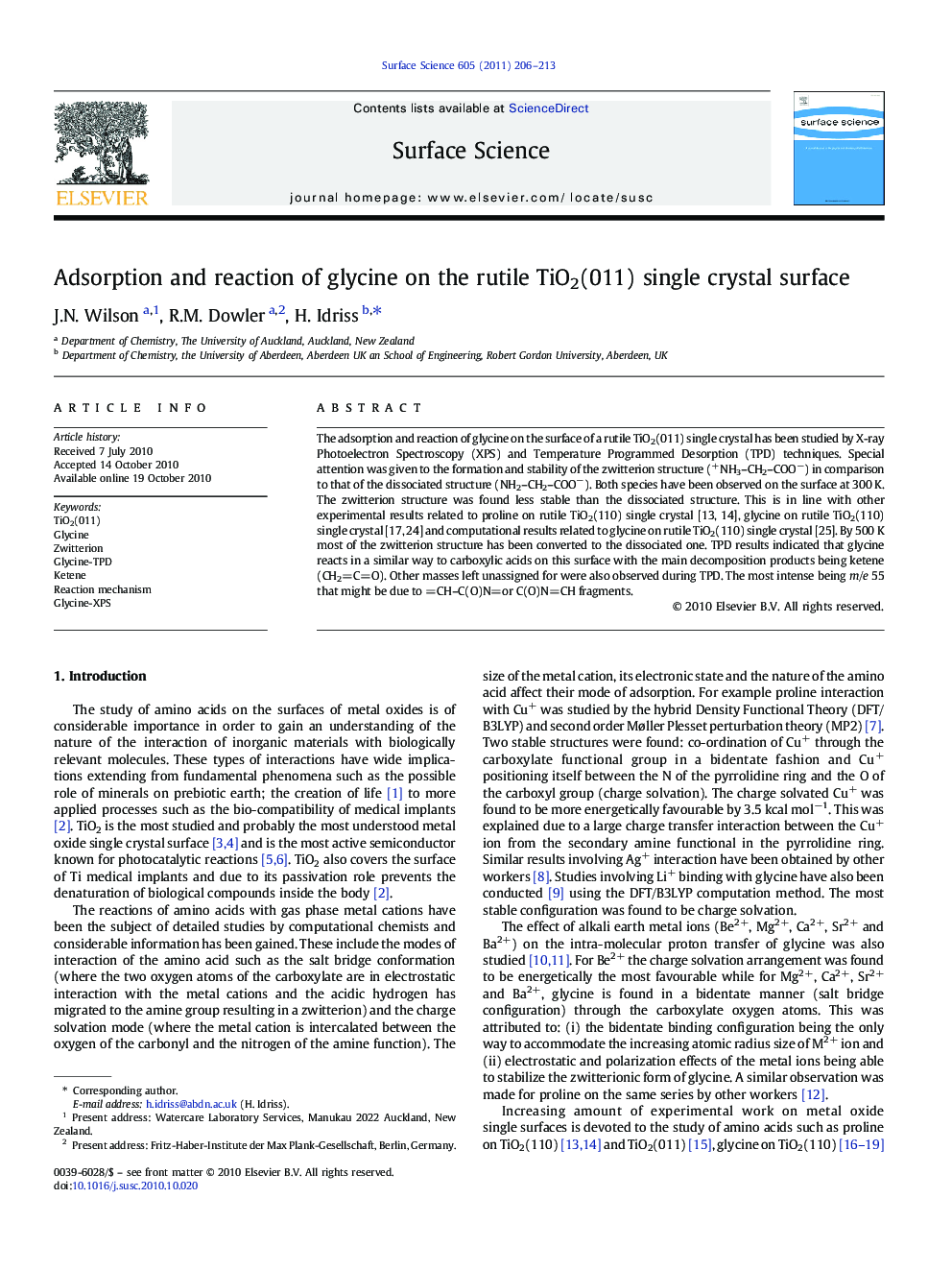| Article ID | Journal | Published Year | Pages | File Type |
|---|---|---|---|---|
| 5423657 | Surface Science | 2011 | 8 Pages |
Abstract
The adsorption and reaction of glycine on the surface of a rutile TiO2(011) single crystal has been studied by X-ray Photoelectron Spectroscopy (XPS) and Temperature Programmed Desorption (TPD) techniques. Special attention was given to the formation and stability of the zwitterion structure (+NH3-CH2-COOâ) in comparison to that of the dissociated structure (NH2-CH2-COOâ). Both species have been observed on the surface at 300Â K. The zwitterion structure was found less stable than the dissociated structure. This is in line with other experimental results related to proline on rutile TiO2(110) single crystal [13, 14], glycine on rutile TiO2(110) single crystal [17, 24] and computational results related to glycine on rutile TiO2(110) single crystal [25]. By 500Â K most of the zwitterion structure has been converted to the dissociated one. TPD results indicated that glycine reacts in a similar way to carboxylic acids on this surface with the main decomposition products being ketene (CH2=C=O). Other masses left unassigned for were also observed during TPD. The most intense being m/e 55 that might be due to =CH-C(O)N=or C(O)N=CH fragments.
Related Topics
Physical Sciences and Engineering
Chemistry
Physical and Theoretical Chemistry
Authors
J.N. Wilson, R.M. Dowler, H. Idriss,
